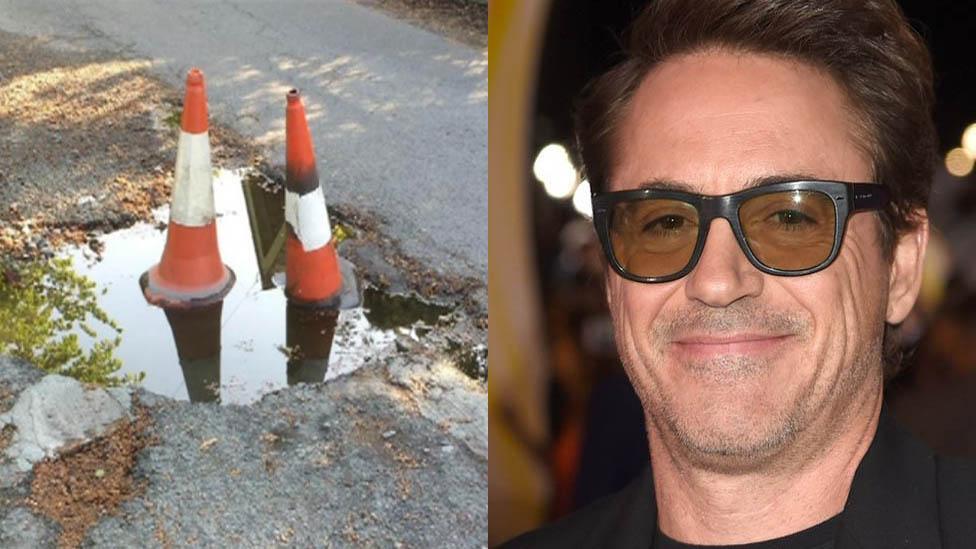Dolittle: How Robert Downey Jr was inspired by a Welshman
- Published
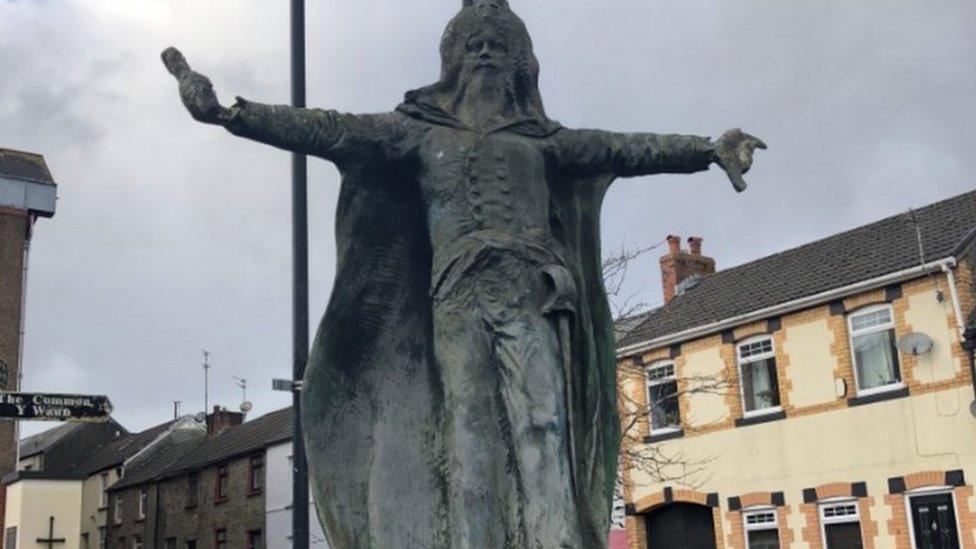
William Price is still remembered in Llantrisant, where there is a statue of him
Dr Dolittle talks to the animals - and now he does so in a Welsh accent.
Hollywood star Robert Downey Jr says he based his portrayal of the character in a new adaptation on a 19th Century Welsh doctor who lived in Llantrisant.
He told the Graham Norton Show that as soon as he had discovered William Price's story, he knew he had found his inspiration for the character of Dr Dolittle.
"I wanted to do something different... and I read about this guy named William Price who was this nutty, kind of neo-druidic doctor in the 19th Century," he said.
"I based my character on him - he was a little bit controversial - he was into cremation which was considered really taboo back then."
Dr Price was a colourful figure who wore unusual, bright clothes and a fox-fur hat.
He was also a druid, a chartist leader and a nationalist vegetarian who advocated free love.
Allow YouTube content?
This article contains content provided by Google YouTube. We ask for your permission before anything is loaded, as they may be using cookies and other technologies. You may want to read Google’s cookie policy, external and privacy policy, external before accepting. To view this content choose ‘accept and continue’.

"With flamboyant costumes and wonderful headdresses, this was a man who was only five foot five and a half inches tall so I often think he was almost pixie-like in his demeanour," said biographer Dean Powell.
"But he was very charming.
"He was a great orator who considered himself the archdruid of Wales and he had a real eye for the women."
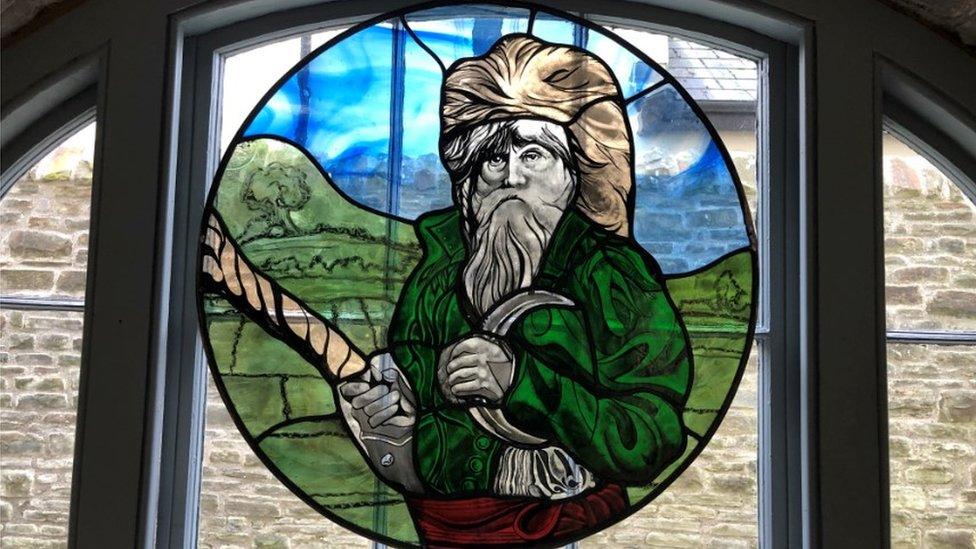
Dr Price is remembered in Llantrisant with a stained glass window
His love of champagne was also infamous and he died, aged 92, in the arms of his lover, 60 years his junior, sipping a glass, Mr Powell added.
Dr Price's original clothes are stored at St Fagans National Museum of History, but replicas are on display at Llantrisant Guildhall along with other original possessions of Dr Price, including his pestle and mortar and surgical needles.
Born in 1800 in Rudry, north of Cardiff, William Price became a surgeon at the age of 21.
He gained his greatest notoriety when at the age of 83 he attempted to cremate his infant son, Iesu Grist (Jesus Christ), who died at five months of natural causes.
On a Sunday evening in January 1884, dressed in white druidic robes, he carried out his own funeral on a hillside above Llantrisant.
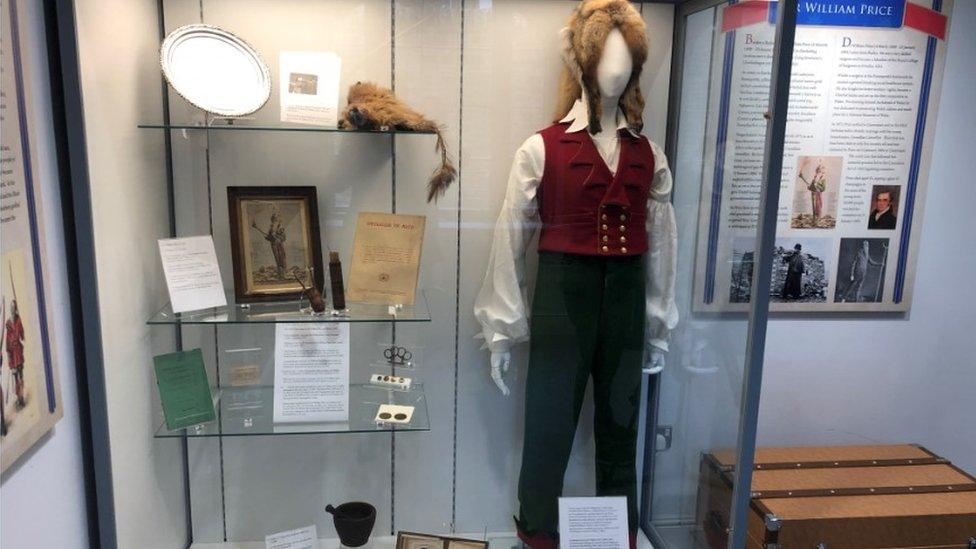
A display shows the unusual clothes Dr Price wore
When people from the town came to see what he was doing, Dr Price was arrested and later stood trial in Cardiff.
Representing himself, he argued that there was no law preventing cremation and consequently he had done nothing wrong.
Following his acquittal, he publicly completed the cremation of his son.
The practice grew in popularity and Dr Price's actions paved the way for the Cremation Act of 1902 which made it commonplace in the UK.
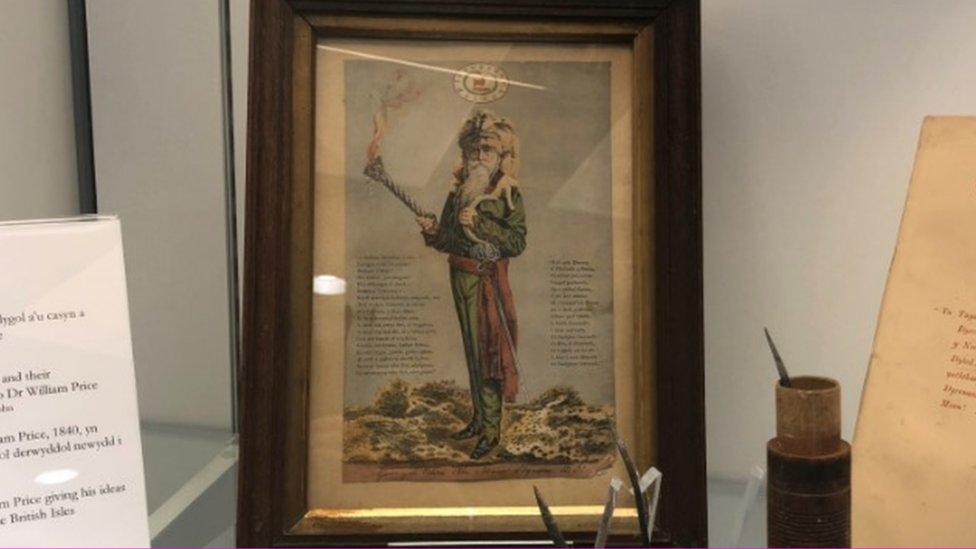
He was also involved with campaigns for a national museum
Dr Price himself had died before the new law had entered the statute book - but his cremation was carried out on the same hillside above Llantrisant with 20,000 mourners in attendance.
Mr Powell said many of his other achievements have been overshadowed by this one.
"He also tried to push for the first national museum in Wales and even was there for the re-establishment of the National Eisteddfod," he added.
"He tried really hard to change people's perceptions of the Welsh and their culture."
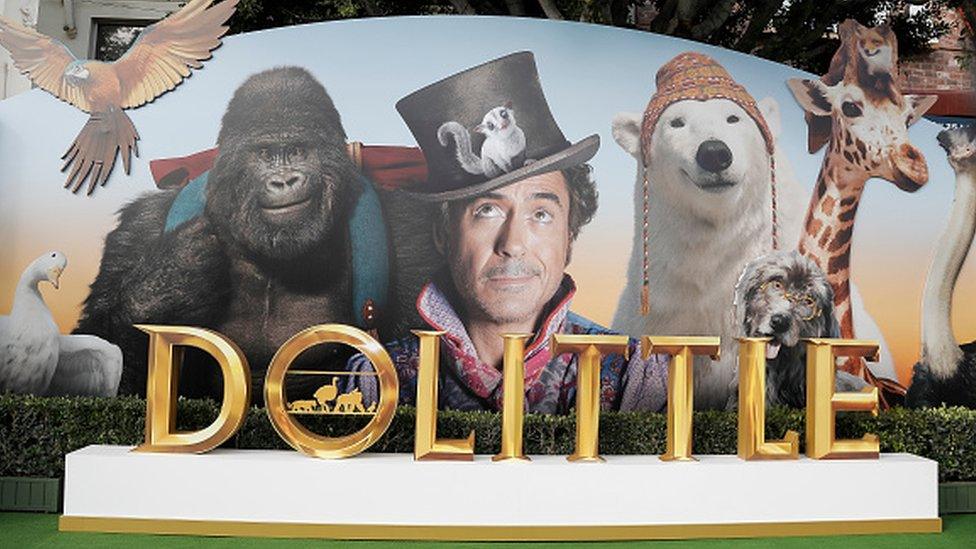
Robert Downey Jr plays Dolittle as Welsh, despite the original books placing him in a village in the west of England
Parts of the new movie were filmed in Wales, with the Menai Bridge featuring in the trailer, giving another Welsh link.
Mr Powell believes the inspiration for Downey Jr's Dr Dolittle was a great lover of publicity - and would have been delighted.
"I can honestly say that Dr William Price himself would have loved it because he was such an egotist, he was such a great showman," he said.
"He loved playing to an audience whether it was in one of his controversial court cases or whether it was in a political oration or whatever it may have been."
Mr Powell also said he was a lover of animals, especially goats.
"I'm not suggesting he spoke to them but for all that I think it's lovely that it puts him back on the stage again, which is certainly where he deserves to be."
- Published3 November 2019
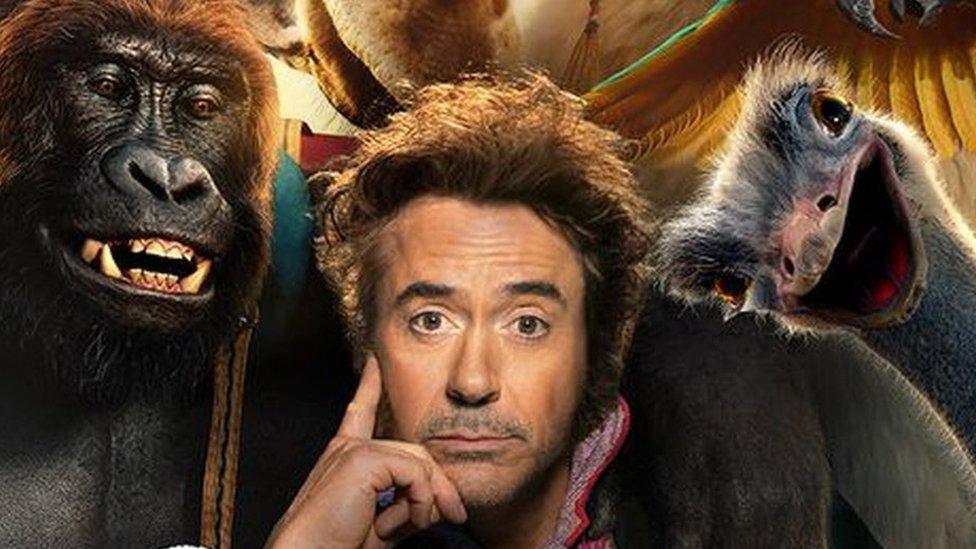
- Published3 June 2018
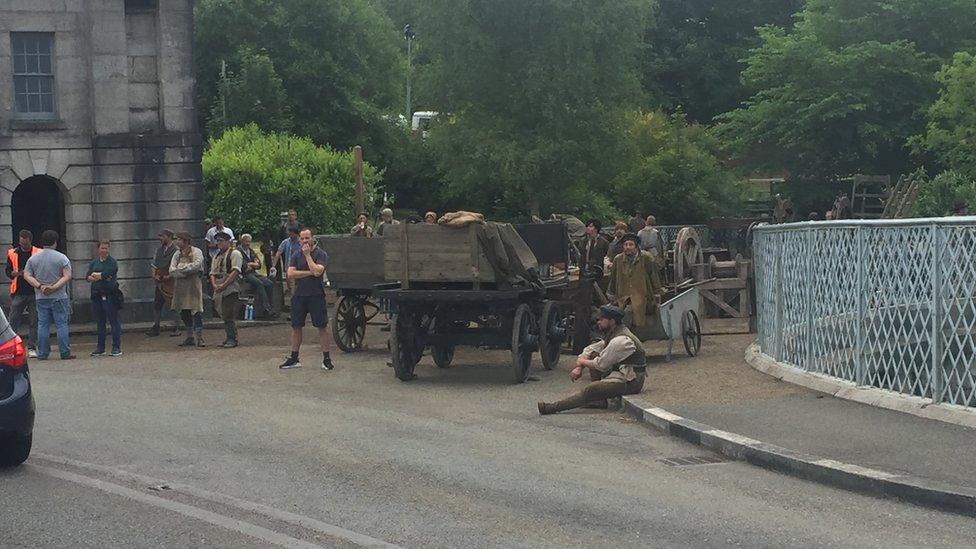
- Published7 June 2018
